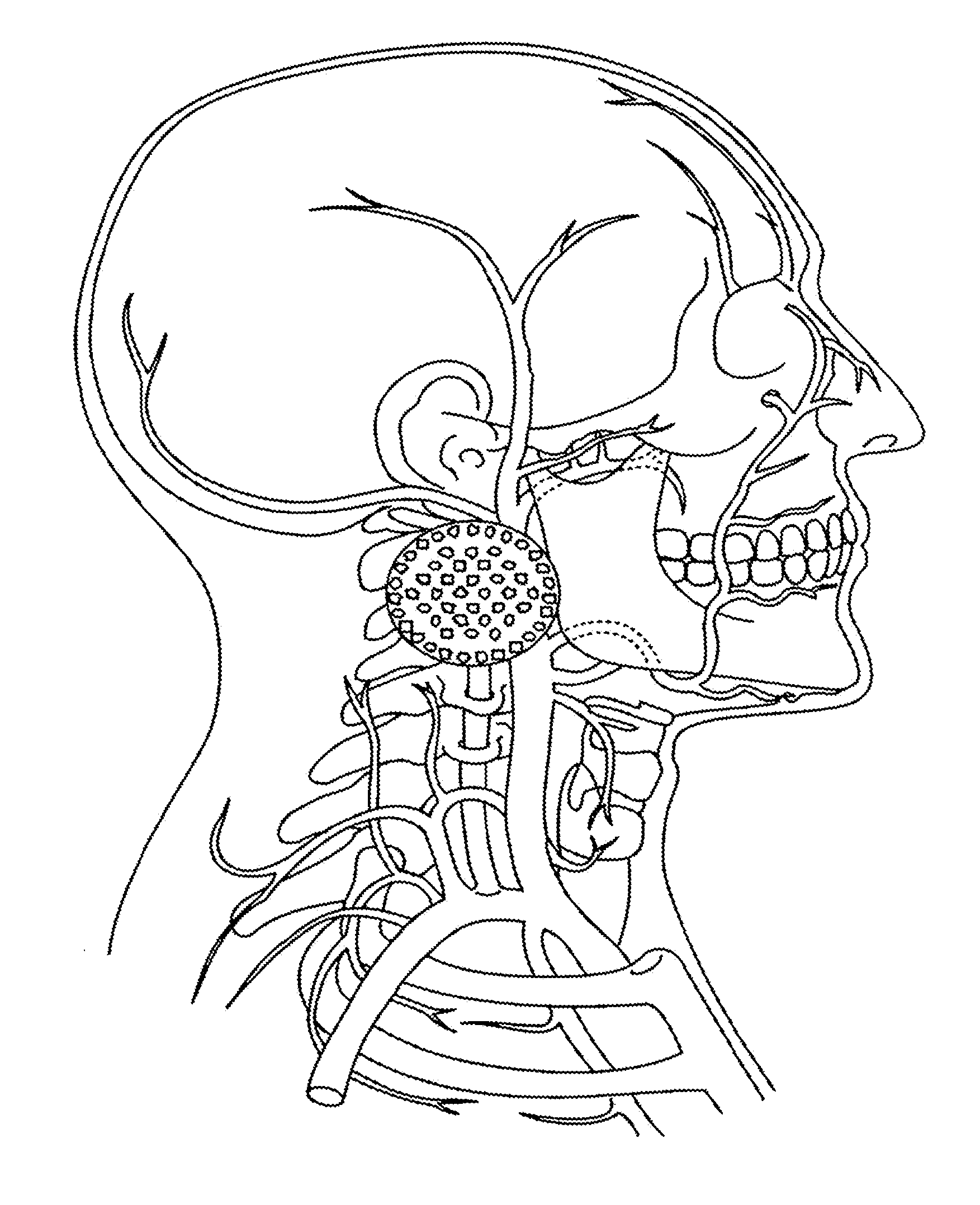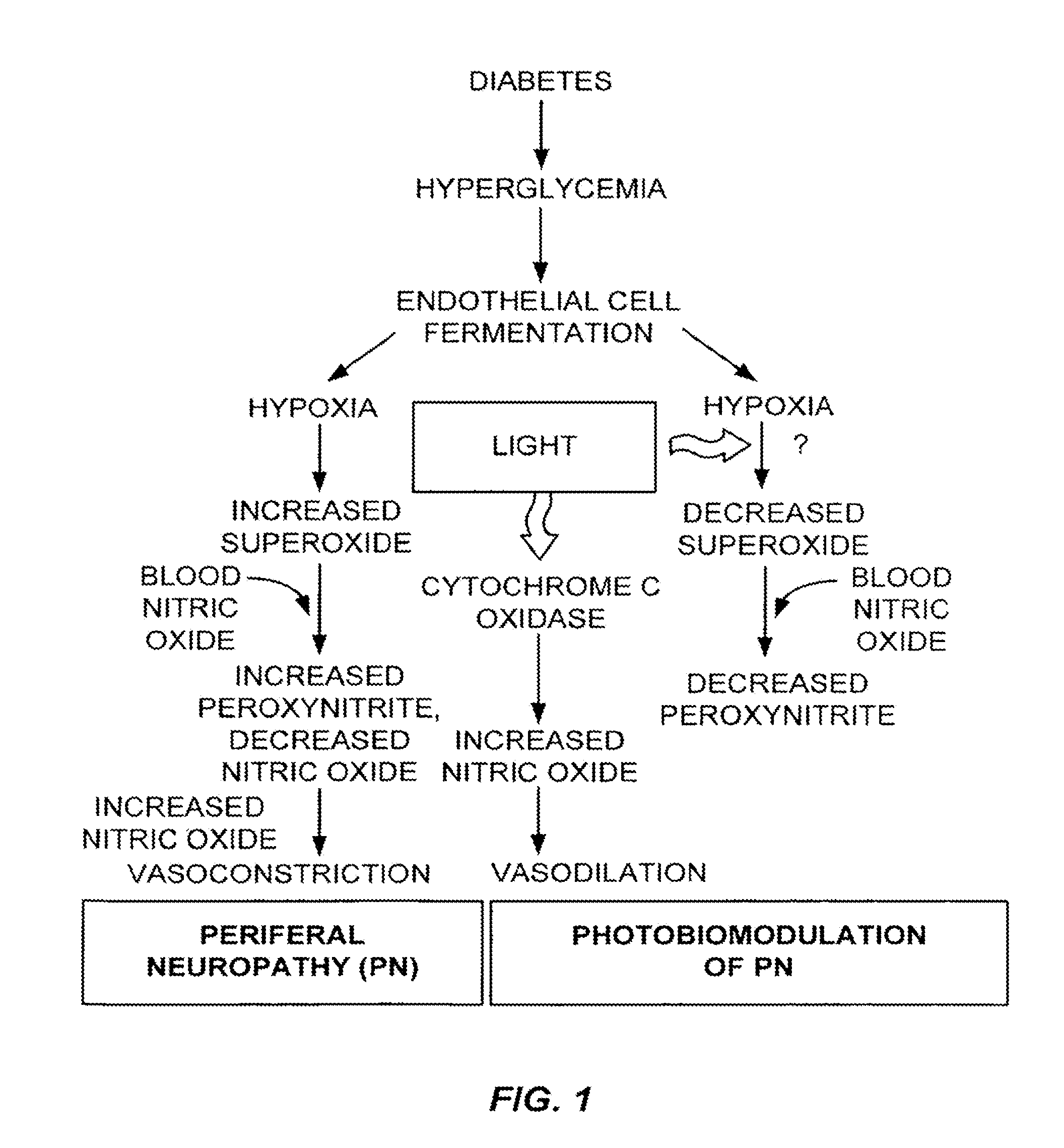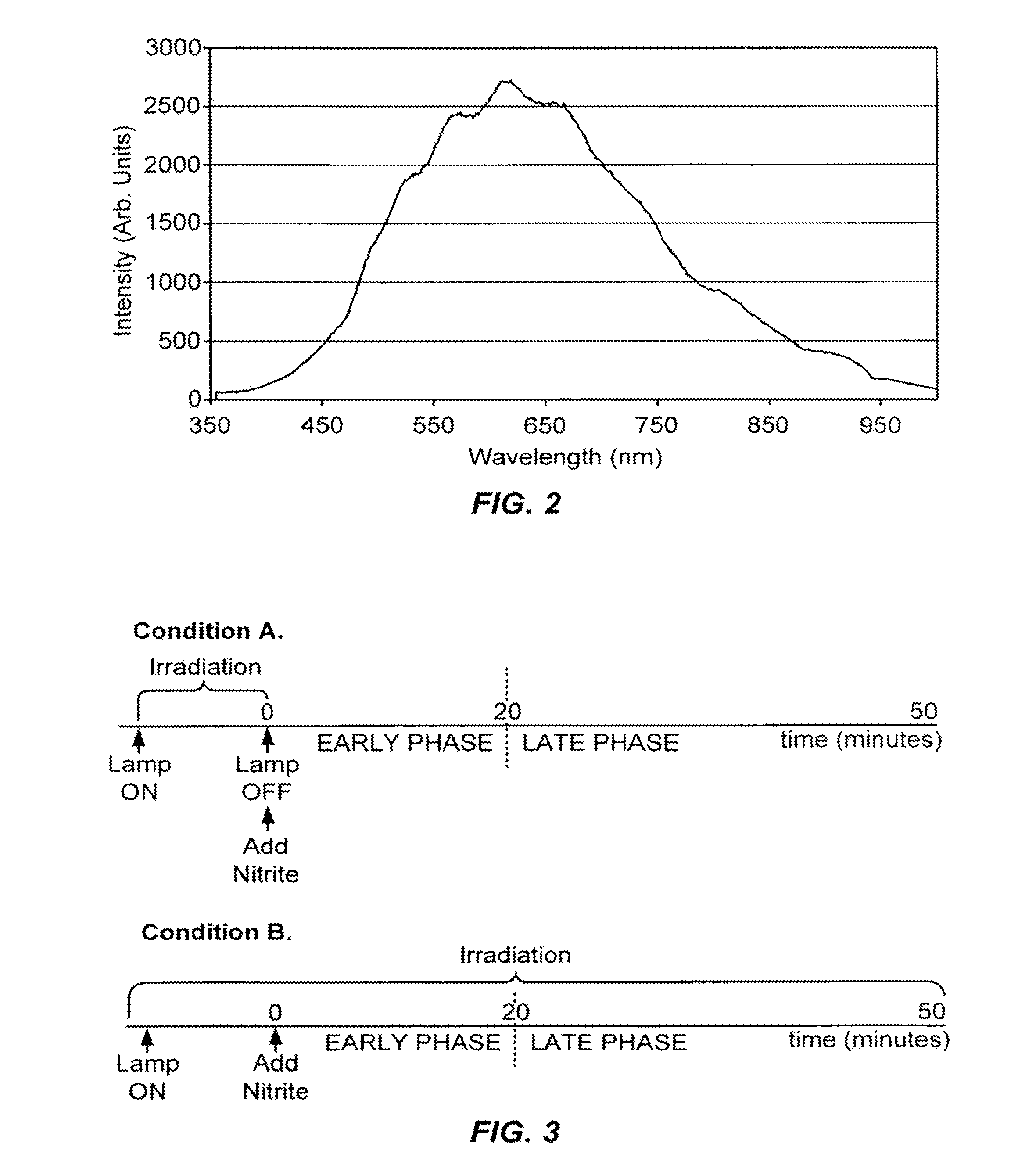Visible light modulation of mitochondrial function in hypoxia and disease
a technology of mitochondrial function and visible light, applied in the field of visible light modulation of mitochondrial function in hypoxia and disease, can solve the problems of lower extremity amputation, achieve the effects of promoting phosphorylation or conversion, reducing the level or production of reactive oxygen species, and no production
- Summary
- Abstract
- Description
- Claims
- Application Information
AI Technical Summary
Benefits of technology
Problems solved by technology
Method used
Image
Examples
example 1
Role of the Respiratory Chain in NO Production in Endothelial Cells Under Hypoxic Conditions
[0088]Currently, there are two known pathways for NO synthesis. The first involves nitric oxide synthase (NOS), an enzyme that converts arginine to citrulline in the presence of NADPH and oxygen. There are three isoforms of nitric oxide synthase (NOS). These are designated NOS I (neuronal NOS), NOS II (inducible NOS), and NOS III (endothelial NOS). The second pathway for NO production involves nitrite-dependent NO production by the mitochondrial respiratory chain. This pathway is active only at reduced oxygen concentrations.
[0089]The relative importance of the NOS-dependent and NOS-independent NO synthesis in endothelial cells is assessed before and after visible light treatment. The production of NO is evaluated in cells exposed to hypoxic conditions in the presence of physiological concentration of nitrite. The involvement of the respiratory chain in this process is evaluated in the presenc...
example 2
NO Production by Endothelial or Cells
[0090]Endothelial cells are isolated and cultured as described elsewhere (Wang et al., 2007; Wang et al., 2004). Hypoxia (1.5% O2, 93.5% N2, 5% CO2) or anoxia (5% CO2, 4% H2, 91% N2) is established in an IN VIVO workstation (Biotrace) or Coy laboratories glove box, pre-equilibrated with the appropriate gas mixture. All cell extracts are prepared inside the workstation or glove box to prevent re-oxygenation. Cells are maintained under anoxic or hypoxic conditions for varying lengths of time (2-8 hr). Nitric oxide production is evaluated with the fluorescent nitric oxide indicator DAF-FM (Molecular Probes, CA). Nutrient media are supplemented with 20 μM NaNO2. The involvement of the respiratory chain in nitrite dependent NO production is evaluated in the presence of: a) the inhibitors of complex III Antimycin A (10 μM), myxothiazol (10 μM) and Cyanide (1 mM); b) disruptors of the mitochondrial membrane potential FCCP (10 μM) and dinitrophenol (100 ...
example 3
Mitochondrial Functionality and NO Production
[0091]Mitochondria from normal and hypoxic cells is isolated and evaluated for respiratory control, hypoxic production of nitrite dependent NO production, and production of nitrite dependent NO production after incubation with ATP and theophylline, using methods described previously (Castello et al., 2006).
PUM
 Login to View More
Login to View More Abstract
Description
Claims
Application Information
 Login to View More
Login to View More - R&D
- Intellectual Property
- Life Sciences
- Materials
- Tech Scout
- Unparalleled Data Quality
- Higher Quality Content
- 60% Fewer Hallucinations
Browse by: Latest US Patents, China's latest patents, Technical Efficacy Thesaurus, Application Domain, Technology Topic, Popular Technical Reports.
© 2025 PatSnap. All rights reserved.Legal|Privacy policy|Modern Slavery Act Transparency Statement|Sitemap|About US| Contact US: help@patsnap.com



